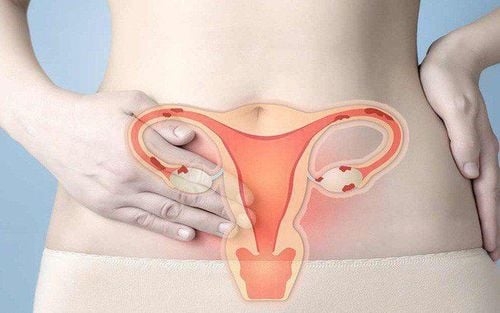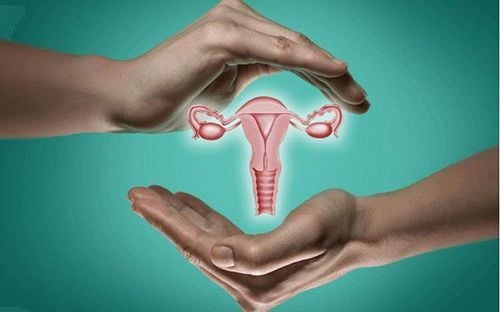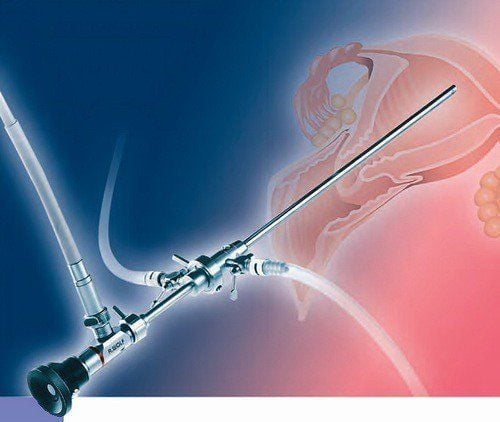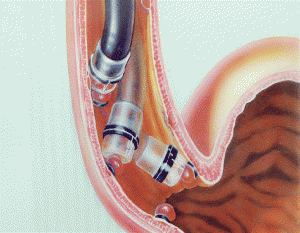This is an automatically translated article.
The article was professionally consulted by an Anesthesiologist, anesthesiologist, anesthesiologist - Department of General Surgery & Anesthesia - Vinmec Hai Phong International General Hospital.Endotracheal anesthesia is a general anesthetic used in many procedures. Including laparoscopic surgery to treat infertility due to blocked fallopian tubes.
1. What is endotracheal anesthesia?
Endotracheal anesthesia is a technique of general anesthesia, which is performed by placing a catheter from the mouth into the patient's trachea for the purpose of controlling breathing during the operation or procedure. Endotracheal anesthesia helps to maintain airway patency, easy tracheal aspiration, and respiratory control during surgery.During the procedure, the patient will temporarily lose sensation and consciousness due to the effects of anesthesia, but the patient can still breathe on his own or breathe through an endotracheal machine.
Endotracheal anesthesia Laparoscopic hysterectomy, tubal catheterization is a technique of general anesthesia with endotracheal intubation to control breathing during surgery and postoperative resuscitation.
2. Indications and contraindications
Indications:Intraoperative anesthesia in patients with unilateral tubal occlusion or bilateral tubal occlusion in the treatment of infertility; When performing respiratory anesthesia but mask control is difficult; Maintain anesthesia under inhalation anesthesia. Contraindications :
When the patient does not agree to perform; Insufficient means of anesthesia and resuscitation; The operator is not technically proficient.

Bệnh nhân tắc vòi tử cung cần phẫu thuật được chỉ định gây mê nội khí quản
3. Procedure
3.1 Preparation
Performer: Doctor and nurse specializing in anesthesiology and resuscitation.Facilities:
Anesthesia machine system with ventilator; hand squeeze oxygen source; monitor vital functions such as electrocardiogram, arterial blood pressure, SpO2, EtCO2, breathing rate, temperature; defibrillator, phlegm aspirator. Laryngoscope, endotracheal tube of various sizes, suction tube, mask, squeeze balloon, oropharyngeal cannula, Magill pliers, soft mandrin. Drugs: Used in anesthesia resuscitation and treatment of accidents. Prophylaxis in case of difficult intubation: Cook tube, laryngeal mask, flexible bronchoscope, tracheostomy kit, mouth opener... Patient:
Full anesthetic examination before surgery , detect and prevent the risk of accidents that may occur. Advice on possible complications in laparoscopic anesthesia. Evaluation of cases at risk of difficult intubation. Use sedation the night before surgery if the patient is too nervous.
3.2 Steps to take
3.2.1 Patient:Patient position: Lie on back, breathe 100% oxygen 3-6 l/min at least 5 minutes before induction of anesthesia. Install a vital signs monitor, in laparoscopic surgery must have EtCO2 parameters. Establish effective communication. Pre-medication. 3.2.2 Induction of anesthesia:
Anesthesia can be initiated by intravenous, inhalation or a combination of anesthetics. Combine some drugs to increase the effect of anesthetics such as: Opioid pain relievers, muscle relaxants if needed. Prophylaxis of reflux with H2-receptor antagonists and metoclopramide. Oral intubation: The condition for intubation is when the patient is in deep sleep, with enough muscle relaxation in most cases.
Open the mouth, put one hand under the neck to help straighten the neck, insert the laryngoscope to the right of the mouth, slide the patient's tongue to the left, push the lamp deep, coordinate with the right hand to press the thyroid cartilage to find the epiglottis and hole glottis. Perform rapid induction of anesthesia and the Sellick maneuver in cases of full stomach. Pass the endotracheal tube gently through the glottis, stopping when the balloon of the endotracheal tube passes about 2-3 cm across the vocal cords. Remove the laryngoscope and inflate the endotracheal balloon. Check the correct position of the endotracheal tube with auscultation and EtCO2 results. Secure the tube with tape and place the cannula in the mouth to avoid biting the tube (if necessary). In the case of difficult intubation, the difficult intubation procedure is applied. Maintenance of anesthesia: Maintain anesthesia with intravenous or volatile anesthetics, analgesics and muscle relaxants (if necessary).
Monitor:
Need to control breathing with ventilator or hand squeeze. Monitor the depth of anesthesia based on heart rate, blood pressure, sweating, tearing... Preventing cases of endotracheal intubation in the wrong position, folding, or obstruction.
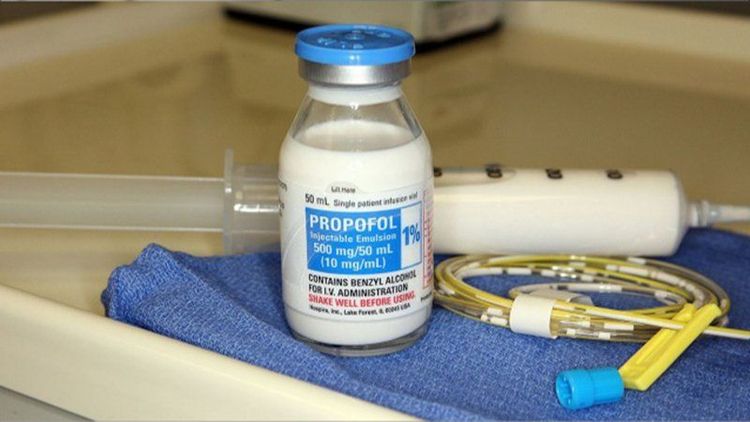
Trong quá trình gây mê, người bệnh được duy trì mê bằng thuốc mê tĩnh mạch
3.3 Standards for extubation
When the surgery is completed, the endotracheal tube should be extubated when the following criteria are met:The patient is awake, following orders; Lift head for more than 5 seconds, TOF >0.9 (if any); Spontaneous breathing, breathing rate within normal limits; Stable pulse and blood pressure; Body temperature > 350 C; There were no complications of anesthesia and surgery.
4. Complications and management of complications due to intubation
4.1 Reflux of gastric juice into the airway
Signs: There is digestive juices in the oral cavity and airways. Treatment: Immediately remove the fluid, lie down with the head low, tilt the head to the side; Rapid intubation of the endotracheal tube and aspiration of the airway fluid; Monitoring and prevention of lung infections after surgery4.2 Hemodynamic disorders
Hypotension or hypertension, arrhythmia (bradycardia, tachycardia, arrhythmia). Depends on the treatment.
Người bệnh có thể bị rối loạn nhịp tim do rối loạn huyết đông sau gây mê
4.3 Complications due to intubation
Intubation is not possible: Handle with difficult intubation procedure or switch to another method of anesthesia. Placed in the stomach by mistake: -Signs: Auscultation of the lungs without alveolar murmur, EtCO2 cannot be measured.-Treatment: Reinsert the endotracheal tube.
Constriction of vocal cords, airways, bronchi: -Difficult or impossible to ventilate, auscultural crackles or muted lungs
-Treatment: Provide adequate oxygen, add sleeping pills and muscle relaxants, ensure ventilation and give bronchodilators and corticosteroids; If breathing is not controlled, a difficult endotracheal intubation procedure should be used.
Trauma when intubation Bleeding, broken teeth, damage to the vocal cords, falling foreign objects into the airways...
4.4 Respiratory complications
Folding, retracting causes the endotracheal tube to be pushed deep into one lung, retract or open the respiratory system, running out of oxygen...Treatment: Need to immediately ensure ventilation and provide 100% oxygen, solve the cause core.
4.5 Complications after extubation
Respiratory failure can have many causes; Sore throat hoarseness; Constriction of the larynx, trachea and bronchi; Inflammation of the upper respiratory tract; Narrow larynx, trachea. Treatment depends on each case and each cause.4.6 Complications due to endoscopy
Air embolism; Pneumothorax , pneumomediastinum , pneumothorax ; Arrhythmia; Damage to blood vessels; Perforation of hollow viscera; Damage to the urinary system. Above are the things you need to know about endotracheal anesthesia technique in hysteroscopy, fallopian tube and tubal catheterization for infertility treatment. Anesthesia in laparoscopic surgery to treat blocked fallopian tubes can have a number of complications caused by many factors, in which the technique of medical staff and supportive means are very important. Therefore, when you want to examine and treat patients, you should choose reputable hospitals to avoid accidents.Vinmec IVF Reproductive Center is the address of infertility - infertility treatment chosen by many couples. Up to now, the Center has performed fertility support for over 1000 infertile couples with a success rate of over 40% such as: The journey to find a child of Mrs. Phuong and her husband. This rate is equivalent to developed countries such as UK, USA, Australia,...
With high professional qualifications and extensive experience, Vinmec IVF Center's experts are capable of developing synchronously and comprehensively deploying the most advanced assisted reproductive techniques today, helping to realize the dream of parenthood of hundreds of families across Vietnam.
Please dial HOTLINE for more information or register for an appointment HERE. Download MyVinmec app to make appointments faster and to manage your bookings easily.




